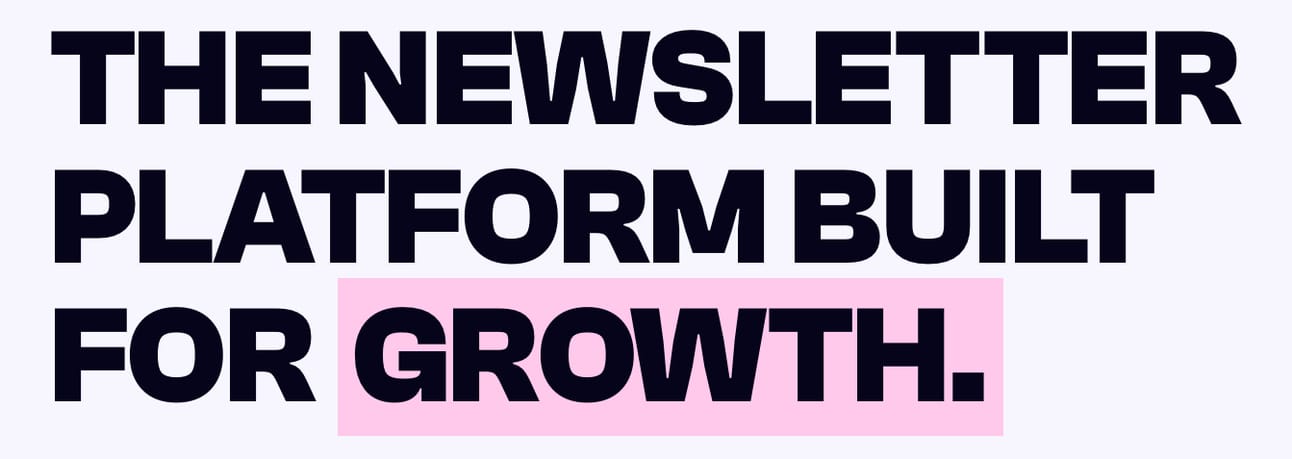Hey, Grow Newsie reader!
Your call-to-action (CTA) is the bridge between your brilliant content and your bank account. Yet most newsletter creators treat CTAs like an afterthought, slapping on a generic "Click here" and wondering why their conversion rates hover around 0.5%.
Today, we're diving deep into the psychological mechanisms that make some CTAs irresistible while others get ignored. By the end of this edition, you'll have a toolkit of science-backed strategies that top newsletter creators use to achieve 15-25% click-through rates (compared to the industry average of 2-3%).
The Neuroscience Behind Decision-Making
Before we craft compelling CTAs, we need to understand how your subscribers' brains process calls-to-action. Neuroscientist Antonio Damasio's research reveals that emotions, not logic, drive 95% of our purchasing decisions. Your CTA isn't just text—it's a psychological trigger that either activates or paralyzes your reader's decision-making process.
The brain processes CTAs in three stages:
Recognition (0.1 seconds): Visual pattern detection
Evaluation (2-3 seconds): Risk vs. reward assessment
Action (varies): Motor response initiation
Understanding this process allows us to design CTAs that work with, not against, human psychology.
The 7 Psychological Triggers That Drive Action
1. Urgency & Scarcity (The FOMO Factor)
The Psychology: Our brains are wired to overvalue things that might disappear. The scarcity principle triggers the amygdala, creating a mild stress response that compels immediate action.
Instead of: "Sign up for our course"
Try: "Join the last 47 spots before we close enrollment Friday"
Pro Tip: Always make your urgency genuine. False scarcity destroys trust and can lead to unsubscribes.
The Psychology: Mirror neurons make us unconsciously mimic others' behaviors. When we see evidence that others have taken an action, it reduces our perceived risk.
Instead of: "Download our guide"
Try: "Join 12,847 newsletter creators who've already downloaded this revenue blueprint"
Implementation: Include specific numbers, testimonials, or user counts in your CTAs.
3. Loss Aversion (The Pain of Missing Out)
The Psychology: Psychologist Daniel Kahneman proved we feel losses twice as strongly as equivalent gains. Frame your CTA around what they'll lose by not acting.
Instead of: "Get our premium strategies"
Try: "Don't let another month pass without these growth strategies"
4. Curiosity Gap (The Information Void)
The Psychology: Our brains have an insatiable need to close information loops. When you create a knowledge gap, the brain releases dopamine, making the click irresistible.
Instead of: "Read our case study"
Try: "The weird trick this newsletter creator used to 10X their revenue (it's not what you think)"
The Psychology: We're evolutionarily programmed to follow leaders. Establishing authority reduces cognitive load—subscribers don't need to evaluate risk as thoroughly.
Instead of: "Try our method"
Try: "Use the same strategy that helped me build a $2M newsletter empire"
6. Reciprocity (The Give-First Principle)
The Psychology: When someone provides value first, we feel psychologically obligated to reciprocate. This principle is so powerful that it works even when the initial favor is small.
Before asking for a purchase: Provide a valuable free resource, then follow up with your premium offer.
7. Progress & Achievement (The Completion Bias)
The Psychology: Our brains are wired to complete tasks and achieve goals. CTAs that position the action as progress toward a desired outcome feel more compelling.
Instead of: "Buy our course"
Try: "Take the next step toward your $10K/month newsletter"
The Anatomy of a High-Converting CTA
Every effective CTA contains these psychological elements:
Action Verb + Benefit + Urgency + Social Proof
Example: "Join 5,000+ creators building profitable newsletters (last 48 hours for early-bird pricing)"
Color Psychology That Converts
The color of your CTA button triggers subconscious responses:
Orange: Urgency, excitement, impulse purchases
Green: Growth, harmony, "go" signal
Red: Emergency, immediate action, high-stakes decisions
Blue: Trust, security, professional services
Test different colors with your audience—the "best" color is the one that contrasts most with your design while aligning with your brand psychology.
The Power of Power Words
Certain words trigger stronger emotional responses. Here are the top-performing CTA power words based on conversion data:
High-urgency: Instant, Immediate, Now, Today, Limited Value-driven: Free, Exclusive, Secret, Proven, Guaranteed
Action-oriented: Discover, Unlock, Transform, Master, Build
A/B Testing Your CTAs: The Data-Driven Approach
Never guess—always test. Here's a simple framework:
Test one element at a time: Button color, text, placement
Run tests for at least 7 days: Account for weekly behavior patterns
Ensure statistical significance: Minimum 100 clicks per variation
Document everything: Build a CTA library of what works
Real-World Case Study: The 400% CTA Improvement
Newsletter creator Sarah Chen increased her course conversion rate from 2.1% to 8.4% by changing just her CTA:
Before: "Get the course" (generic, no emotional trigger)
After: "Claim your spot in the last group before we close enrollment" (urgency + scarcity + exclusivity)
The psychological difference? The second CTA activated multiple decision-making triggers simultaneously while creating a sense of exclusive opportunity.
Your Action Plan for This Week
Audit your last 5 newsletters: Identify weak CTAs using our psychological framework
Rewrite one CTA: Apply at least 3 psychological triggers
Set up A/B tests: Compare your new CTA against the old one
Track metrics: Monitor click-through rates, conversion rates, and unsubscribe rates
The Bottom Line
Your CTA is your conversion engine. Every psychological principle we've covered today can mean the difference between a hobby newsletter and a profitable business. The creators earning 5-6 figures aren't just better writers—they're better psychologists.
Remember: People don't buy products; they buy better versions of themselves. Your CTA should be a bridge to that transformation.
Keep growing!
With love,
Nikhil
How was today's edition?
If you’ve ever thought about starting your own newsletter (or switching to a better platform), I’ve partnered with the beehiiv team to set you up with:
✅ 20% off your first 3 months
✅ A free 30-day trial, no credit card needed
